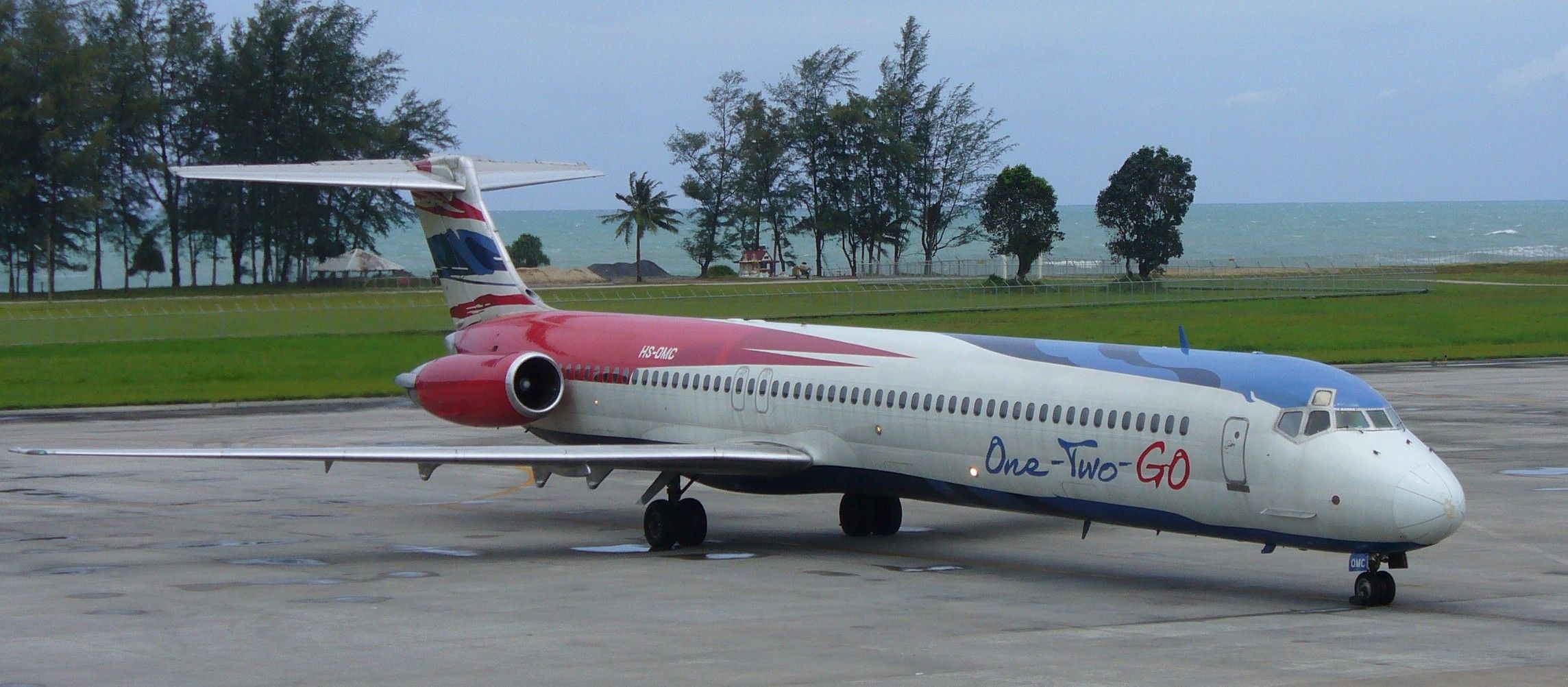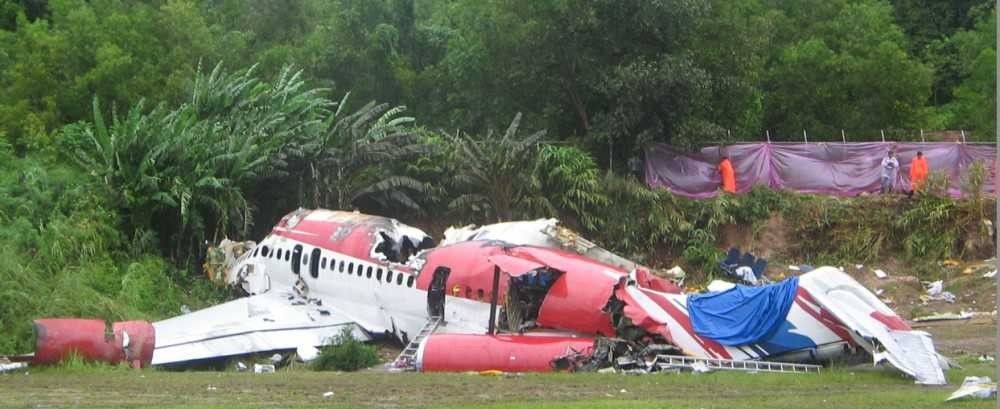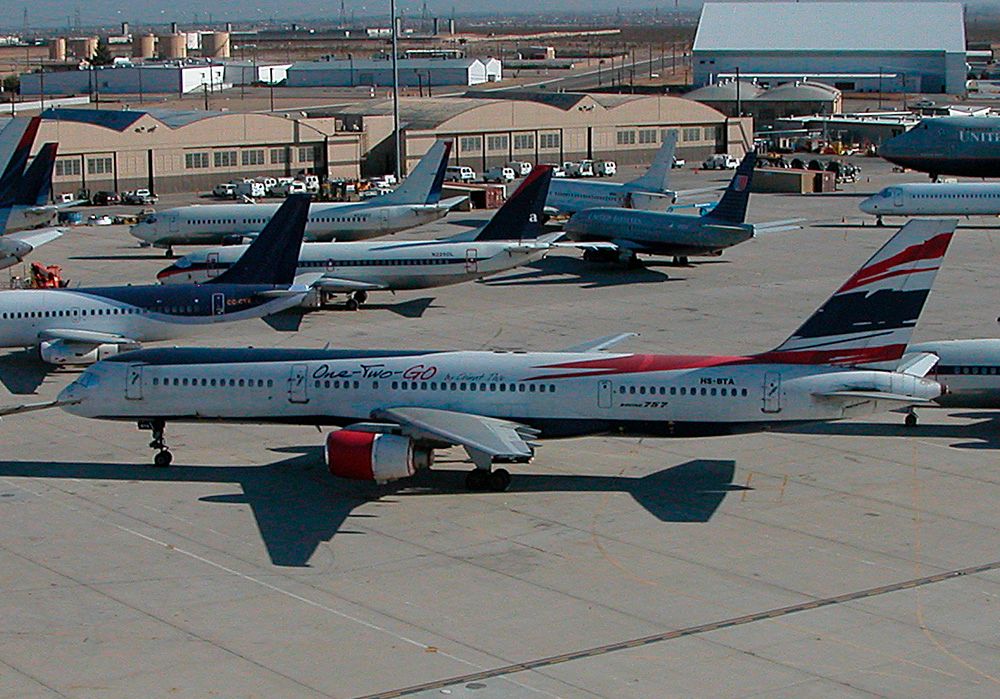Based at Bangkok's Don Mueang International Airport (DMK), One-Two-Go Airlines was a Thai domestic budget airline that focused on the northern city of Chang Rai and the holiday island of Phuket. Owned by Thai businessman Udom Tantiprasongchai and his wife Nina Tantriprasongchai, One-Two-Go Airlines was launched in 2003 and was the first low-cost carrier to enter the Thai marketplace.
A year later, Thai AirAsia and Nok Air launched, and while Mr. Tantiprasongchai did not have the two newcomers' financial clout or marketing flair, One-Two-Go Airlines could compete with its rivals. Managed and operated by Orient Thai Airlines, One-Two-Go Airlines fed on Orient Thai Airlines by offering budget-minded European travelers an inexpensive connecting flight to Phuket.
One-Two-Go Airlines operated the MD-82
Unlike Thai AirAsia and Nok Air, which leased newer planes for their operations, One-Two-Go Airlines preferred to own its aircraft outright. Instead of going for newer Boeing 737s, One-Two-Go Airlines went for older McDonnell Douglas MD-82s.
Many of the larger carriers who operated the MD-82 were retiring them from their fleets, allowing One-Two-Go to purchase them at a discounted price. According to ch-aviation One-Two-Go Airlines' fleet was made up of the following aircraft:
- 1 x Boeing 757-200
- 6 x McDonnell Douglas MD-82s
- 1 x McDonnell Douglas MD-83
- 2 x McDonnell Douglas MD-87
Sadly for One-Two-Go and other Thai carriers, disaster struck the day after Christmas in 2004. Following an earthquake off northern Sumatra's west coast, a massive Tsunami slammed into Phuket, leaving 230,000 people in Indian Ocean communities dead. With all of Phuket's infrastructure in ruins, tourism plummeted, and One-Two-Go experienced hard times.
One-Two-Go flight number 269
On September 16, 2007, One-Two-Go flight number 269 crashed while attempting to land in Phuket. The McDonnell Douglas MD-82 was on a regularly scheduled domestic flight from Bangkok to Phuket when it crashed while trying to land during a severe thunderstorm.
As the aircraft approached the runway, wind shear forced the pilots to abandon the landing and go around. During the attempt to gain altitude, the aircraft failed to gain height and crashed into an embankment killing 90 of the 130 passengers and crew.
At first, the cause of the accident was put down to wind shear and the storm's severity. However, it soon became apparent that what happened had more to do with how the pilots executed the go-around.
While investigating the crash, disturbing revelations about One-Two-Go Airlines came about-including airline officials lying to investigators in an attempt to throw them off track.
The airline lied to investigators
While looking into the accident, Thailand's Aircraft Accident Investigation Committee (AAIC) wanted to see if the pilots were tired and what training they had for flying the MD-82. All the documentation One-Two-Go Airlines handed over to the investigators appeared to show that all was above board.
One month later, an Australian television show doing a feature on the crash uncovered a bombshell when they reported that all the documentation given to the AAIC was fake.
The actual documents showed that both the pilot and co-pilot had been violating duty times for several months leading up to the crash. After interviewing former One-Two-Go pilots, it turns out that the airline regularly broke the rules and even forced pilots to fly planes that needed maintenance.
The AAIC determined that the cause of the crash was down to multiple errors lack included a lack of training and a corrupt corporate culture at One-Two-Go Airlines. The airline brand was retired in 2010, with all its assets transferred to Orient Thai Airlines.
Do you ever fly with One-Two-Go Airlines? If so, please tell us what you thought about them in the comments.



